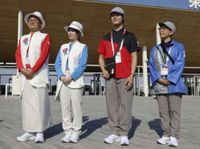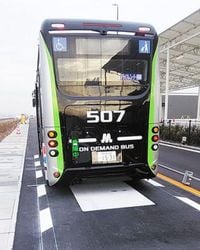Daihen, in collaboration with Kansai Electric Power, Obayashi Corporation, and Osaka Metro, is set to embark on an innovative half-year verification test of wireless power supply technology for electric vehicle (EV) buses at the upcoming Osaka-Kansai Expo, which opens on April 13, 2025. This initiative promises to revolutionize how electric vehicles are charged, enabling them to be powered while in motion.
The technology relies on a wireless charging system that uses magnetic field resonance to transfer energy from sending coils embedded in the road to receiving coils located on the vehicles. The project aligns with the Expo’s overarching concept of being a “laboratory for future society,” creating a platform to showcase pioneering technologies that could shape urban transportation in the coming years.
In preparation for the Expo, precast concrete coils have been embedded in the Expo’s road network since February 2025. Notably, a total of 20 units were positioned along a 100-meter stretch of road on the venue’s west side, while an additional unit was installed at the east gate bus stop. Each of these precast blocks is equipped with two coils capable of outputting 15 kilowatts each, ensuring that when an EV bus passes over them, it will receive a boost of power.
To ensure the reliability and efficiency of the charging system, six small EV buses provided by EV Motors Japan, based in Kitakyushu City, will participate in the test. According to Yoshinori Tsuruta, the head of inverter technology development at Daihen’s Wireless Power Supply Division, “The Expo is the ideal venue to allow the world to learn about our technology.”
The primary goals for the trial run include familiarizing the public with the technology, assessing its durability over the six-month period, and evaluating the regulatory frameworks necessary for its widespread adoption. Tsuruta elaborates, “Our goals are to make the technology known, confirm its durability over six months, and reassess the legal frameworks needed for its proliferation.”
Following the Expo, there are already plans for future testing on expressways, with East Nippon Expressway (NEXCO East Japan) expressing interest in conducting similar verifications on highways.
Daihen is developing its wireless charging technology to work both while the vehicle is in motion and when it is stationary, having already established certain technological benchmarks in both areas. However, the path to commercial implementation will require significant groundwork in terms of legal regulations and international standardization. The company is also taking proactive steps to boost collaboration in this sector by planning to establish a consortium—named the EV Wireless Power Supply Consortium—in 2024, designed to unite academia, industry, and government representatives.
As of February 20, 2025, this consortium has seen a surge of interest, boasting 116 members, including observers. This collaborative effort could pave the way for fostering innovation and addressing the challenges of integrating wireless charging into the existing transportation infrastructure.
Internationally, there are similar efforts underway; for example, an Israeli startup named Electreon is actively conducting pilot tests of wireless charging technology across Europe. However, none of these ventures has reached operational status yet. Daihen, taking cues from global partnerships, aims to form a market presence by collaborating across borders and industries.
The implications of successfully implementing wireless charging systems could be profound, not just in terms of convenience for EV users but also for reducing dependency on traditional charging stations and enhancing the overall appeal of electric buses in urban settings. By validating this technology during the Expo and beyond, Daihen and its partners could influence a significant shift in urban transportation, potentially leading to cleaner and more efficient public transit systems.





